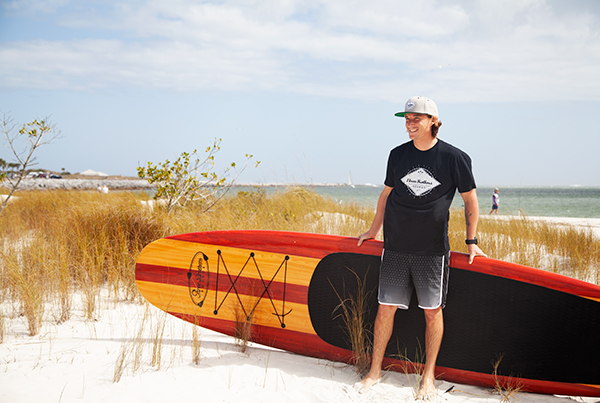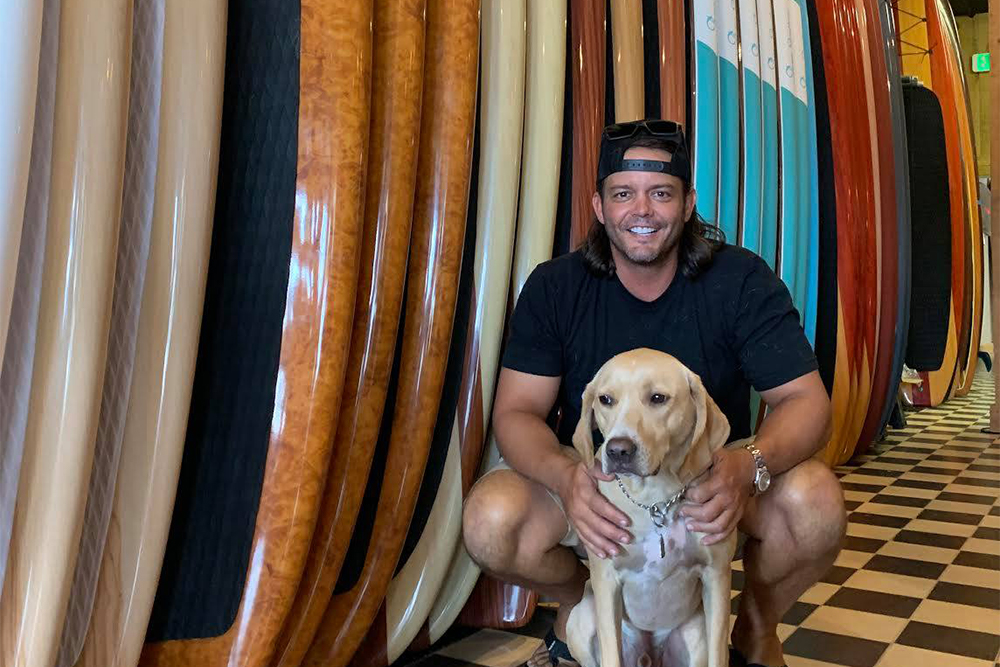While much of the country is under a deep freeze at the moment, the golden days of summer are not that far off. While paddle board training, either for sport or enjoyment may seem a distant goal, now is the time to start planning your season.
Firstly, don’t negate the value of an off season break. Allowing one’s body to recuperate is critical to be able to perform when the season kicks off.
If you live in an area that is not currently frozen and own a wet or drysuit here are some tips for improving while it’s still cold. If possible try to get on the water in the early season to reduce off season loss of skills. Often I encounter paddlers that have taken time off only to get back on the board and have sore calves or arches as the muscles in those areas have not been used during their layoff.
Not everyone has the luxury of getting on the water during the winter months. With that in mind we will optimize off board training. One of the many benefits of stand up paddle boarding is the health factor. Whether paddling for fun or training for a race we incorporate a blend of balance and stability with strength and cardio. While our on board training allows us to train all 3 at once we can still incorporate stability, strength and cardio either at home or in a gym.
Stability is a key element is stand up paddle boarding. We exert stable force against an unstable and dynamic variable in the water. On land we must improvise to simulate the ever changing water surface. A BOSU ball, balance board or dyna disk can be utilized to help build balance and stability. Starting slow and building up we can progress from simply standing on a BOSU ball to a point we can perform body weight squats while maintaining strict form. Eventually we can add in resistance band rows to blend stability and strength training. A pilates ball can also be used, lying on one’s back across the ball with a resistance band fastened to a fixed mount behind the ball we can start with our arms out stretched behind our head, grasp the handles of the resistance band and slowly bring the handles overhead and down to our waist in a motion similar to that of driving a paddle into the water.
Ideally we would like to blend all 3 aspects of stability with strength and cardio. Initially we will keep cardio as a separate item to prevent fatigue based injuries. So that means some time spent either running or on an exercise machine of choice, bike, treadmill elliptical or stair climber. Do specific work. Easy, no-goal hours of cardio won’t get you far. You know your own capabilities, set a realistic time frame and pace, then increment up a few minutes per day while varying the pace. Don’t be afraid to incorporate active rest days at half pace or interval days or high and low output, your body needs this. This doesn’t mean to simply do what you feel like on a given day, stay specific with goals. Schedule hard and easy days and stick with the plan.
We will revisit paddle specific on and off board exercises in future posts but for now remember winter is temporary and try to get in the water as early in the season as possible. While off board training is never the same as quality water time, we can seek to improve our on water experience through the winter months. If you have the ability to visit Central Florida and do not wish to travel with your SUP stop in to Three Brothers boards to see the latest stand up paddle boards or schedule a tour to try them out on the water.


